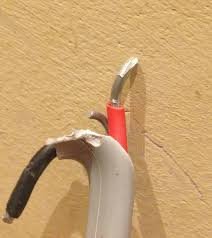regarding 4mm2 cable was it ever available in the old colours with solid conductors rather than the 7 strands version? Ive just done a pre - inspection of a property before doing an EICR and found 2 radial circuits fed from 32A MCBS. The cables appear to be larger than 2,5mm2 . I'm going back to inspect this property with a view to reducing the MCB's to 20A if if they are 2.5mm2. I'm also taking a Vernier gauge to measure the cable diameters and compare to reference tables.
The installation is approximately 30 years old but is in very good condition.


